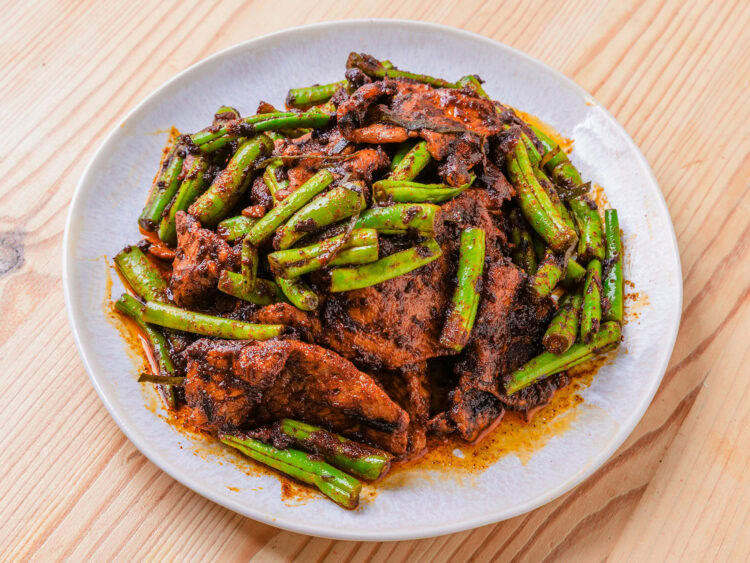A Thai stir-fry of pork and crisp-tender beans, coated in a homemade red curry paste fragrant with citrus and warm spices.
The name promises ginger (“khing” in Thai). Yet most wokfuls of Pad Prik Gaeng lean mostly on chili and makrut lime leaves, with no trace of the rhizome. The absence puzzles scholars and cooks alike.
If ginger stays behind the scenes, what makes this dry red curry stir-fry so authentic? To find out, trace its evolution from royal travel rations to the quick staple of street stalls. You’ll then know how to spot the original versus its coconut-drenched lookalikes.

From travel ration to Thai classic
Pad Prik Gaeng earned its stripes on the road. Palace cookbooks from the early 20th century describe cooks first melting pork fat.
They then fry a red curry paste in it until scarlet oil surfaces, add pork, and let the mixture dry out almost completely. Thanks to this very dry texture, the dish traveled well with soldiers and merchants through tropical heat. No vegetables: preservation was the priority.
With urbanization and bustling markets, the recipe loosened up. Yardlong beans brought a lightly sweet crunch, crispy pork belly added richness and texture, and torn makrut lime leaves layered in citrus aroma.
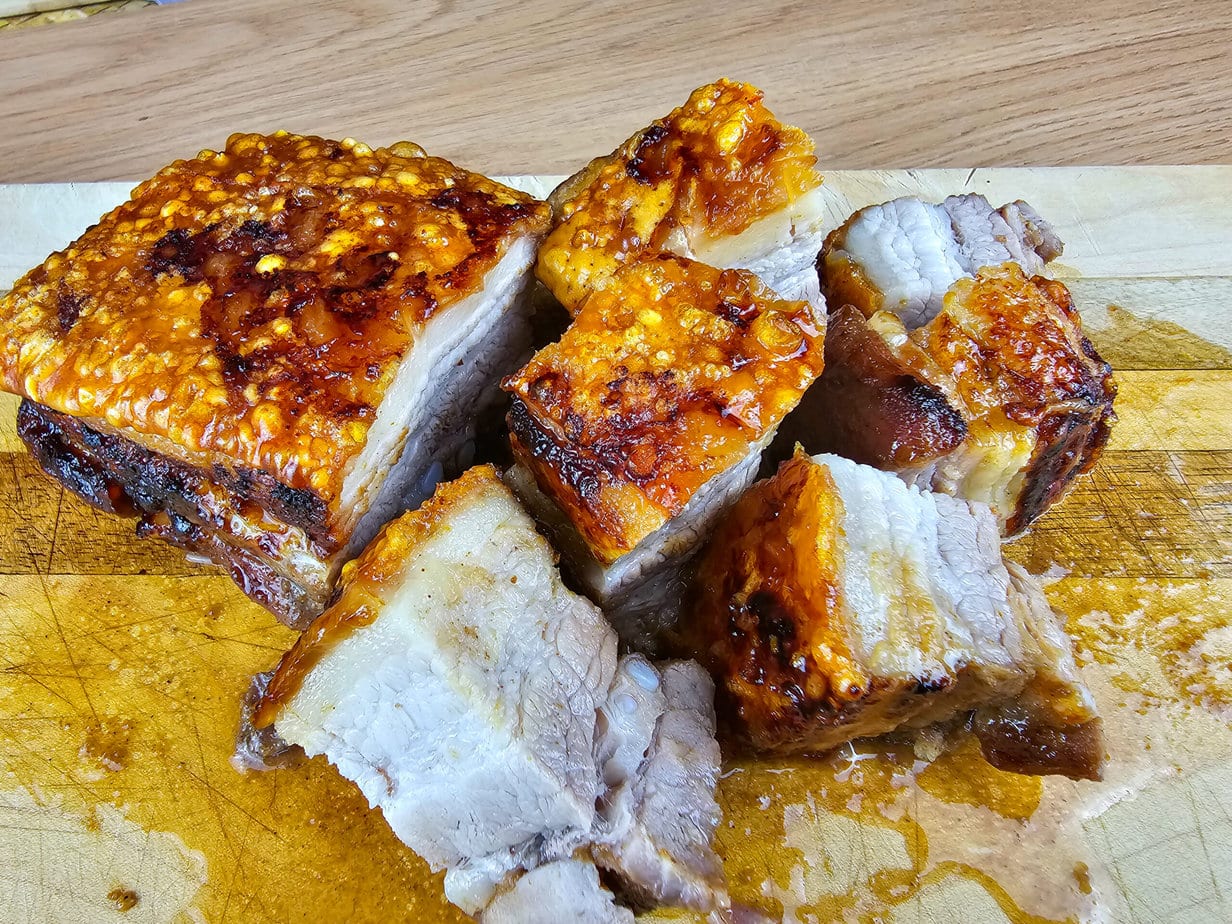
The protein is flexible: an adventurous prince is said to have once requested monitor lizard, proof that the paste and technique matter more than the meat. Curiously, on French-language sites you’re more likely to find a chicken version.
Ingredients, technique, and flavors of the red curry stir-fry
An orthodox paste brings together dried spur chilies for heat, garlic and shallot for depth, lemongrass and galangal for bite, makrut lime zest for fragrance, and a dab of shrimp paste for funk.
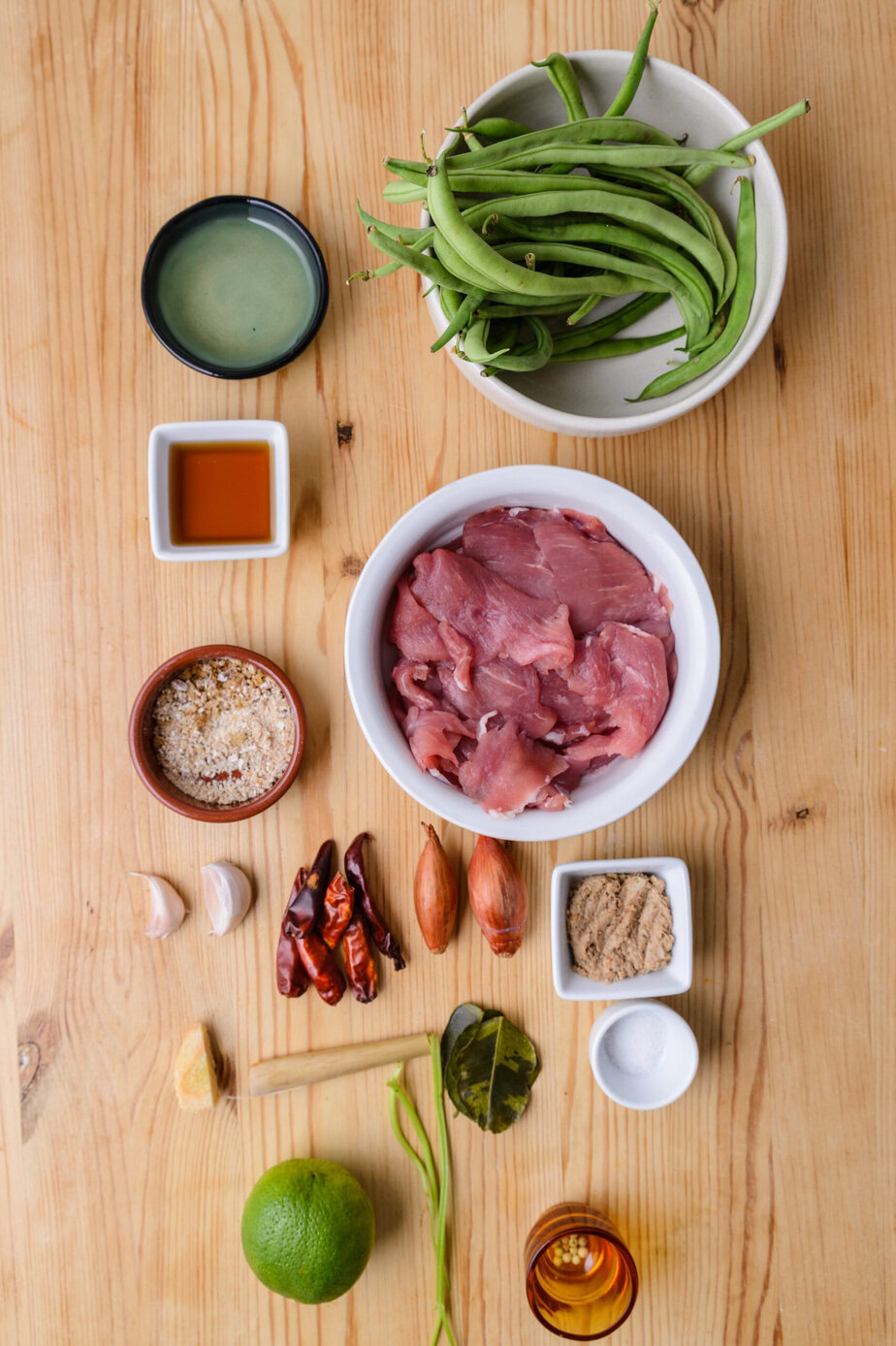
Notice what’s missing: no coconut, no peanuts, no ginger. The mixture is pounded until glossy, then seared in oil until it ‘breaks’: the red oil separates and perfumes the kitchen.
The meat goes in next (often pork belly or shoulder); its fat mingles with the chili oil. Then come the yardlong beans, which stay firm while the wok evaporates almost all the moisture. The flavor unfolds in three beats: first the salinity of fish sauce, then the sharp burn of chili, and finally the sweetness of palm sugar caramelizing on the surface.
Thin shreds of makrut lime leaves are indispensable: as soon as they hit the pan, they release a distinctive lemony aroma.
Modern debates at the bottom of the mortar
Does ginger ever deserve an invitation? Central-region purists shout “never.” In Songkhla, in some northern households, and in the razor-clam version from Samut Songkhram, a little does make its way into the paste.
The confusion thickens when, abroad, menus relabel a creamy panang “prik khing”: the presence of coconut milk shows at once that you’re eating something else. Busy cooks can open a jar of Maesri paste, provided they fry it in oil and wake it up with a bit of pounded lemongrass or garlic: a shortcut doesn’t have to taste cheap.
Regional variations
In Bangkok, the street-stall version marries cubes of crispy pork belly, emerald-green beans, and fine ribbons of makrut lime leaf. In Songkhla, ground peanuts add a praline note and, sometimes, a hint of ginger.
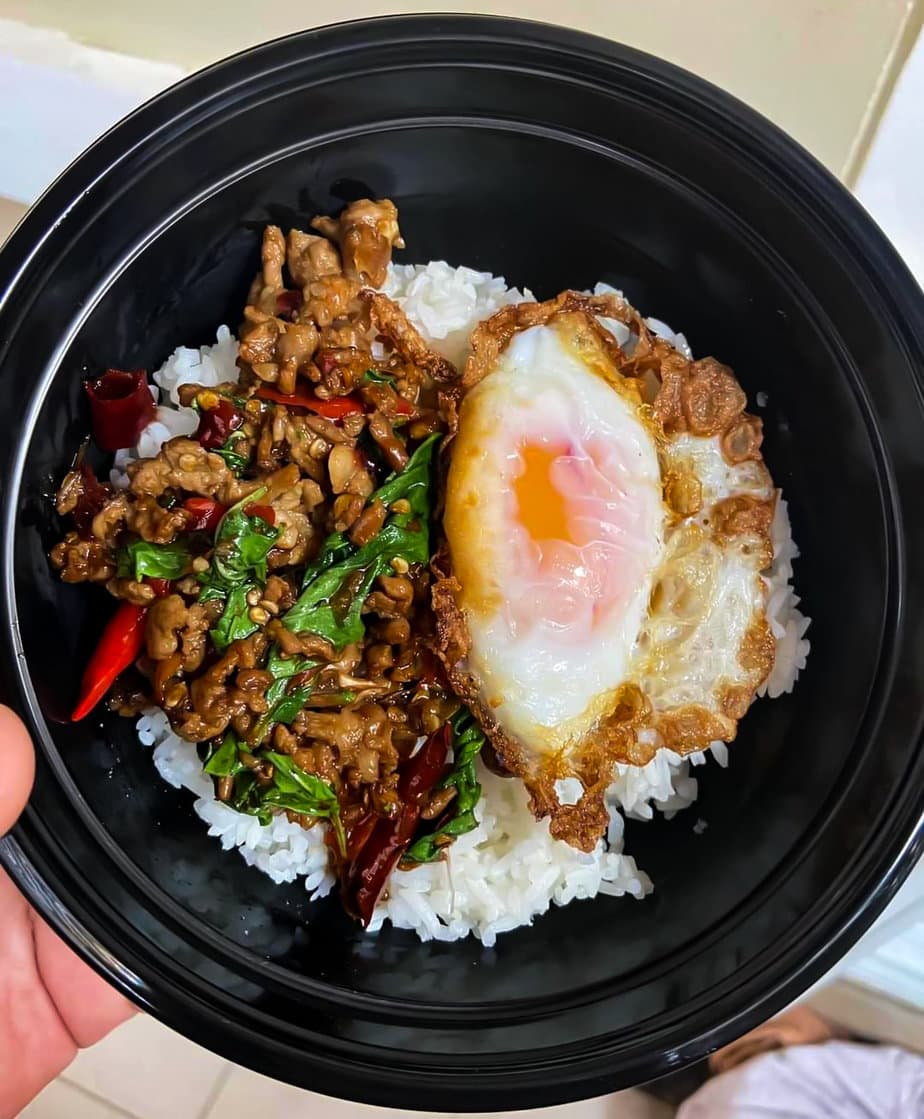
In the North, “kap moo” versions replace belly with crunchy cracklings and dial up the heat with ginger. Fishermen in Samut Songkhram fold razor clams into the paste, proof that seafood carries the curry as proudly as pork. Common ground: a dry technique, glossy with oil, and a total absence of coconut milk.
Enjoying Pad Prik Gaeng the Thai way
Thais temper the curry’s power with steamed jasmine rice, sometimes topped with a fried egg with lacy, crisp edges whose runny yolk softens the burn. Chilled cucumber sticks wait on the side, ready to calm fiery tongues. The dish even inspires an idiom: “ถึงพริก ถึงขิง,” literally “all chili, all ginger,” meaning “give it your all.”
For many, the smell of curry paste frying evokes childhood: chili-laden smoke tickling the nose, pork fat crackling, and at the bottom of the plate, the surprise of a few shards of crispy pork rind.
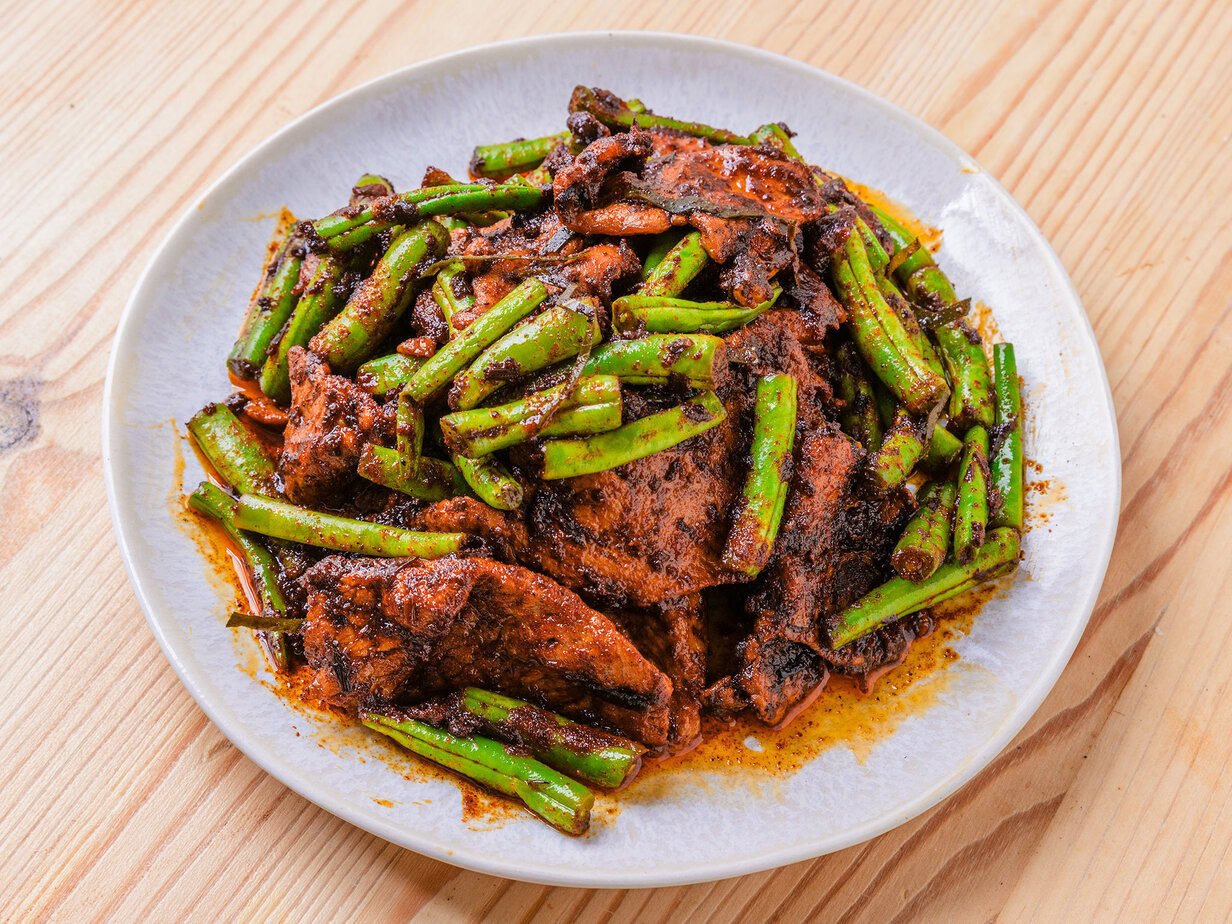
Ingredients
- 250 g pork thinly sliced
- 140 g yardlong beans cut into 2.5 cm lengths
- 3 tablespoons vegetable oil
- 2 tablespoons fish sauce
- 1 tablespoon palm sugar
- 4 leaves makrut lime thinly sliced, for garnish
Spice Paste
- 6 g dried red chilies about 5 whole, or 2 tablespoons sliced
- 12 g shallots about 5 small, chopped
- 12 g garlic about 2 cloves, chopped
- 3 g galangal
- 5 g lemongrass finely sliced
- 2 g white peppercorns about 5 peppercorns
- 2 g cilantro root about 1 root; substitute the stem (without leaves) if needed
- 1 teaspoon makrut lime zest
- 1 teaspoon salt
- 1 teaspoon shrimp paste
Instructions
Make the Paste
- Pound all paste ingredients in a mortar until smooth and fragrant, forming a red curry paste.6 g dried red chilies, 12 g shallots, 12 g garlic, 3 g galangal, 5 g lemongrass, 2 g white peppercorns, 2 g cilantro root, 1 teaspoon makrut lime zest, 1 teaspoon salt, 1 teaspoon shrimp paste
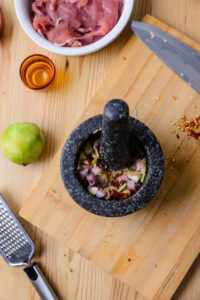
Cook
- Heat the oil in a wok over medium heat, then fry the curry paste until very fragrant and the red oil separates.3 tablespoons vegetable oil
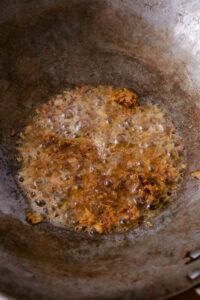
- Add the pork and stir-fry until almost cooked through.250 g pork
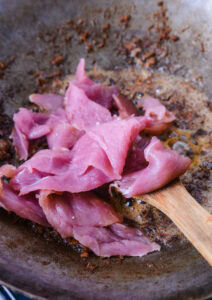
- Stir in the yardlong beans, season with fish sauce and palm sugar, and toss until the beans remain green and the curry is nearly dry. Finish with the makrut lime leaves and serve immediately.140 g yardlong beans, 2 tablespoons fish sauce, 1 tablespoon palm sugar, 4 leaves makrut lime
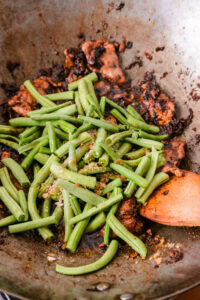
Notes
- Pad prik khing is a dry curry with no coconut milk; fry the paste thoroughly to release its vivid red color and fragrance.
- Add the makrut lime leaves at the end to preserve their bright citrus aroma.
- A quick cook keeps the beans crisp and the color vibrant red-orange.
Nutrition
Culinary sources
- Pad phrik khing – Wikipedia (Thai)
- Pad prik khing with shrimp – Episode XII in Thai Curry – The High Heel Gourmet (English)
- Gai pad prik gaeng recipe (how to make spicy chili-curry chicken stir-fry) – Eating Thai Food (English)
- Pad prik khing – Reddit (English)
- Panang vs prik khing curry – Reddit (English)
- “Pad prik khing” isn’t “chili-ginger stir-fry”? – WAY Magazine (Thai)
- Who has other Thai dish names to share? – Facebook (Thai)
- Buying paste for my favorite Thai dish: pad prik khing – Reddit (English)
